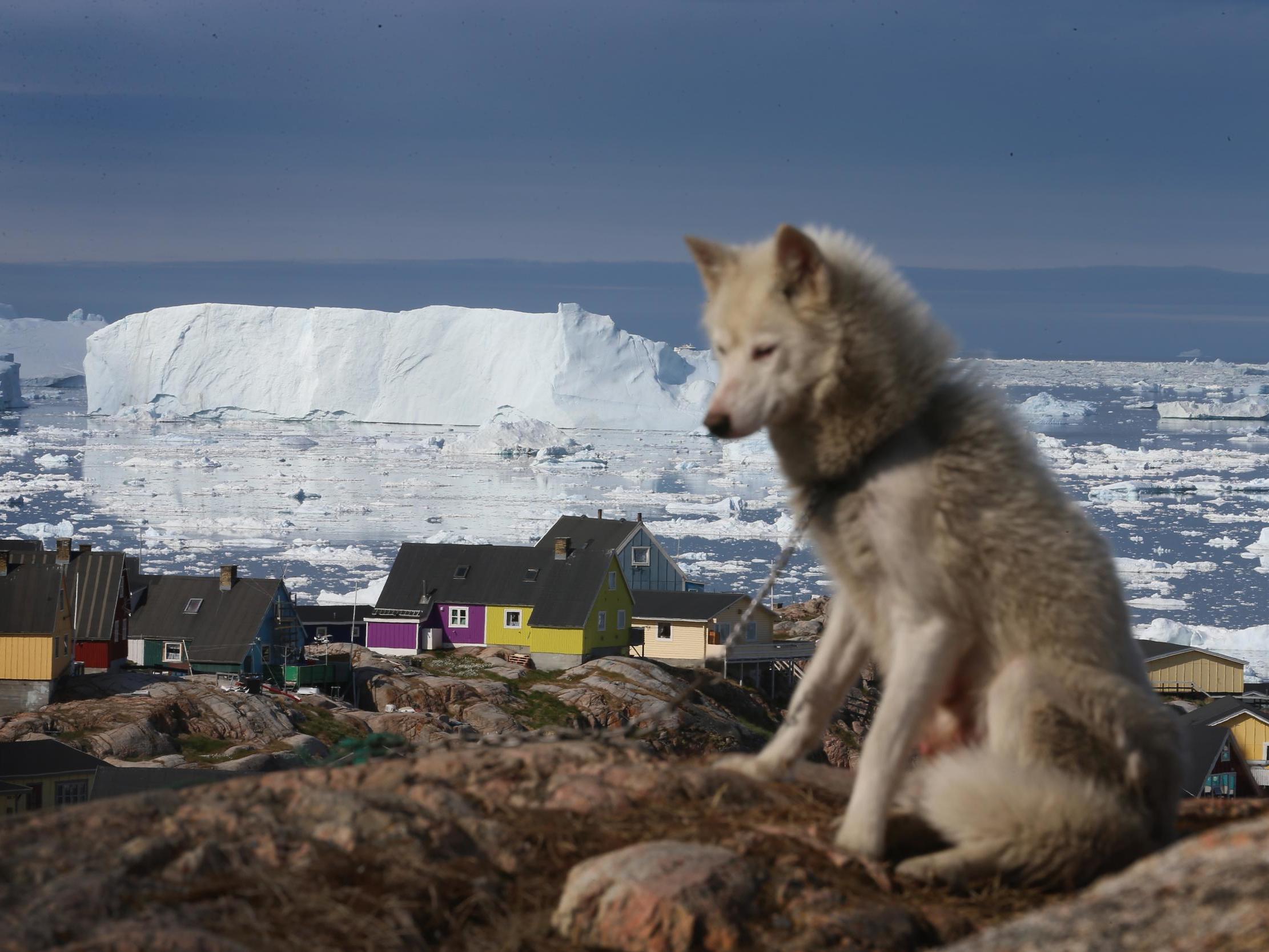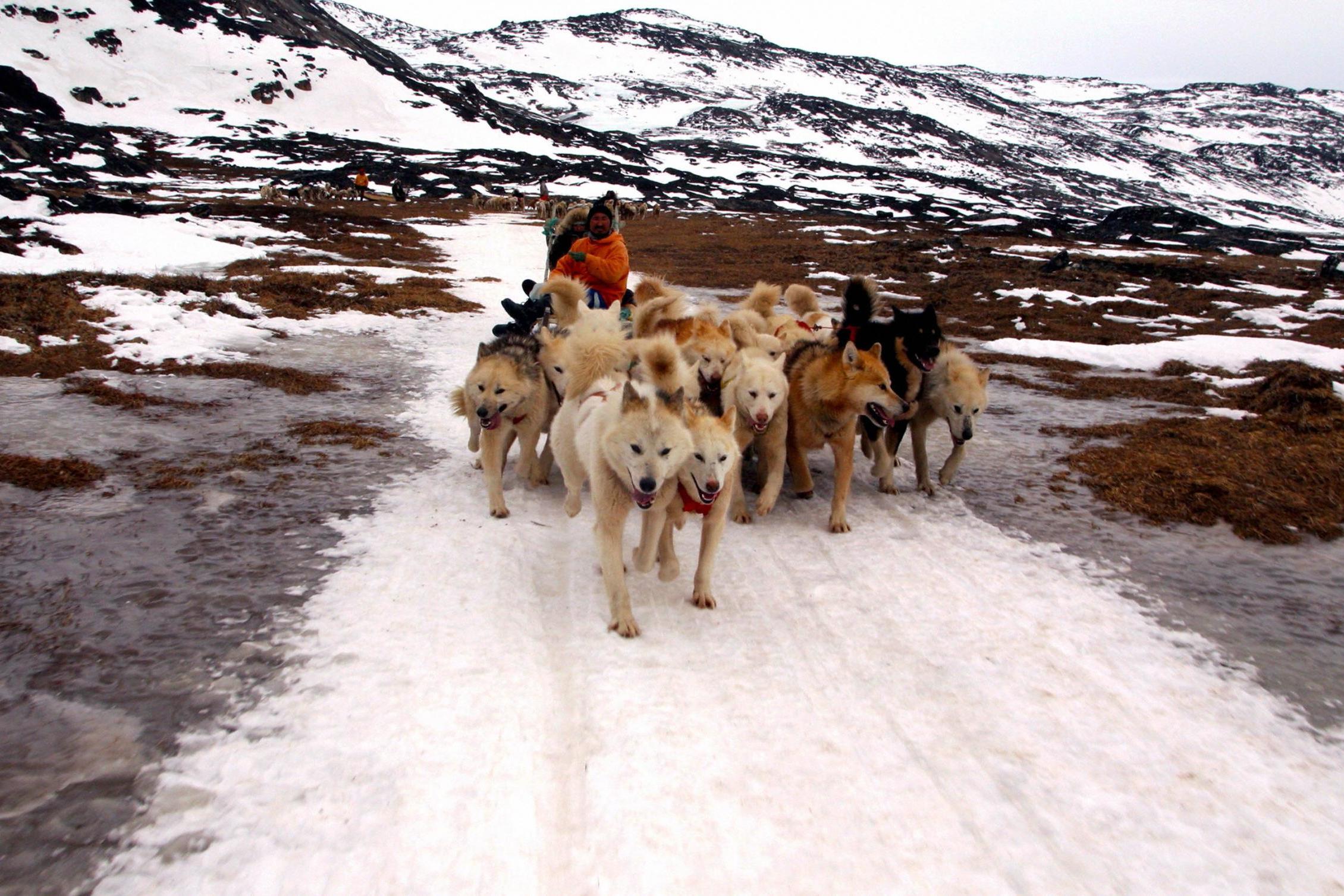The ancient roots of Arctic sled dogs
Experts have uncovered a vivid and genetically detailed picture of the oldest known case of selective breeding. James Gorman reports

Your support helps us to tell the story
From reproductive rights to climate change to Big Tech, The Independent is on the ground when the story is developing. Whether it's investigating the financials of Elon Musk's pro-Trump PAC or producing our latest documentary, 'The A Word', which shines a light on the American women fighting for reproductive rights, we know how important it is to parse out the facts from the messaging.
At such a critical moment in US history, we need reporters on the ground. Your donation allows us to keep sending journalists to speak to both sides of the story.
The Independent is trusted by Americans across the entire political spectrum. And unlike many other quality news outlets, we choose not to lock Americans out of our reporting and analysis with paywalls. We believe quality journalism should be available to everyone, paid for by those who can afford it.
Your support makes all the difference.There are two broad stories about dogs and humans. One is of a deep and meaningful partnership between two species that ensures the survival of both. The other is of scavengers and camp followers that live off our garbage and feed on our corpses in the shadow of war.
Both are undeniably true, in different places and different times, but vast mysteries remain about the early roots of dogs and humans, and when the first glimpses of the working partnership appeared.
A 35-person team, including a who’s who of experts in ancient DNA, has now uncovered a vivid and genetically detailed picture of the oldest known case of selective breeding, the creation of Arctic sled dogs at least 9,500 years ago.
By that time, the researchers found, sled dogs already had mutations in genes involved in oxygen use and temperature sensitivity that set them apart from other dogs and wolves.
And much of that genetic heritage survives in modern Greenland sled dogs. Other Arctic breeds, like Alaskan malamutes and Alaskan and Siberian huskies, also carry some of that heritage, although not quite as much as the Greenland dogs.
Mikkel-Holger S Sinding of the University of Copenhagen, one of the lead researchers on the project, says the genome of an ancient Siberian dog, an even older wolf, and some modern dogs provided “the first hard evidence of early dog diversification”. He and his colleagues published their findings in Science.
Elaine Ostrander, who studies dog genetics and breed differences at the US National Institutes of Health, and was not involved in the research, says it is not a surprise that dogs were being selectively bred 9,500 years ago. They were first domesticated at least 15,000 years ago. But, she says, the new research is the first “where someone’s put it all together and said, you know, this is what was going on 10,000 years ago”.
Terrie M Williams at the University of California, Santa Cruz, who studies the exercise physiology of carnivores, says researchers had tried to understand why sled dogs perform better than other breeds at running long distances, by looking at body shape and the mechanics of running. But they didn’t find the major differences they were expecting.
She says she is thrilled to see that the researchers found specific genetic differences that set sled dogs apart. “That’s what’s so cool here,” she says.
Sled dogs have well-known roots in human prehistory. A 12,500-year-old tool found at one Arctic site hints at its possible use on sleds. And archaeological investigations at a well-known site on Zhokhov Island in the Siberian Sea uncovered dog bones and sled technology indicating that the dogs may have been the first canines bred for a specific task.
Sinding and colleagues dug deep into the DNA of one of those dogs, using a jawbone from the site dating to 9,500 years ago. They also sequenced the genomes of a Siberian wolf dating to 33,000 years ago and 10 modern Greenland sled dogs. They relied on other canine genomes archived in databases as well.
They found that the Zhokhov dog was closest to modern-day sled dogs, particularly to the Greenland sled dogs, which are a “land race”, bred for a task and sharing a look and behaviour but not the sort of breed for which records are kept.
In other words, if you have a malamute or a husky, do not start parading around with your pet claiming its breed goes back 9,500 years
The Zhokhov dog was not a direct ancestor of modern sled dogs, but it shared a common ancestor with modern sled dogs that was probably about 12,000 years old. This evidence suggested that the sled-dog type, bred for hauling loads in brutal winters, was already established 9,500 years ago.
The researchers also found that sled dogs, ancient and modern, did not show interbreeding with wolves, even though other modern dog breeds do, and dog-wolf matings were known in Greenland in historical times. The results suggest hybrids may not have been much use in pulling sleds.
Then the researchers started looking for genes that were different in sled dogs from both wolves and other dog breeds. They found several that made sense. One is involved in a variety of physiological functions including calcium transport and temperature sensitivity. They don’t know what exactly it does in sled dogs, but they do know that several similar genes are different in mammoths, creatures of the cold, and elephants, animals of more temperate climates, suggesting some kind of adaptation to Arctic life.

Another gene that distinguished sled dogs from other dogs is involved in coping with low oxygen conditions. It is also found in a group of humans, sea nomads, who have been diving for thousands of years. It could, Sinding says, contribute to fitness for the extreme demands of long sled-hauling trips.
And finally, one might expect to find the Arctic dogs adapted to a different diet, than say, the dogs of the Fertile Crescent or European farmlands. They do have specific genes to cope with a high fat intake, as do humans and bears who live in the Arctic. And they do not have the same adaptations to digesting starch found in many other dog breeds.
The diet adaptations were not present in the Zhokhov dog, indicating that the sled dogs changed over time.
Sinding cautions that although the Greenland sled dogs and other Arctic breeds carry a major genetic contribution, particularly in terms of the important genes identified, from ancient sled dogs, they are not the same.
The modern sled dogs and sled technology have their origin in Thule culture, he says, which dates to 2,000 to 3,000 years ago. And the Greenland sled dogs went through what is called a bottleneck, about 850 years ago, when the population shrunk. That was when the Inuit arrived, and they succeeded the Thule people, in Greenland.
Modern Arctic breeds do have a major contribution from the sled dogs of 9,500 years ago, he says, but a gap exists between then and 3,000 years ago.
In other words, if you have a malamute or a husky, do not start parading around with your pet claiming its breed goes back 9,500 years. A good part of its genes may derive from those old sled dogs, but as Sinding points out, “in principle, all dogs are equally old”.
© The New York Times
Join our commenting forum
Join thought-provoking conversations, follow other Independent readers and see their replies
Comments